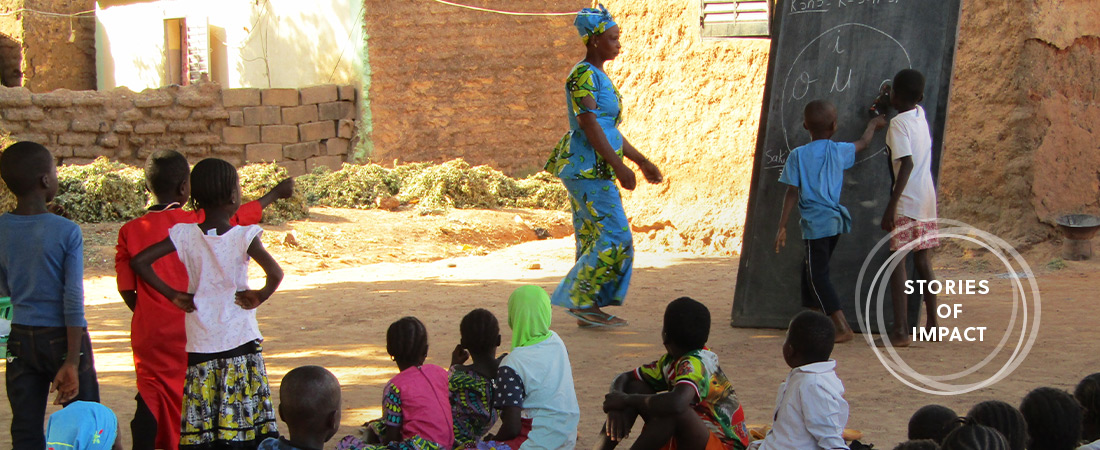Reading Inspires Students, Parents in Mali

When Souleymane Coulibaly’s two young children go to school every day, they learn to read and write in Bamanankan, the national language in Mali. Learning often continues at home, too, when Coulibaly uses a family-school link booklet—a set of easy reading activities that parents can do with their children—to read with his children.
“These booklets don’t just help our children learn—they help the parents, too,” Coulibaly says.
For years, Coulibaly and other parents in the village of N’Tékédo-Samakébougou did not support their children’s literacy development at home. In Mali, helping children learn to read and write is traditionally a teacher’s job. Parents did not know they had a role to play.
That began to change in 2016, when EDC’s USAID-funded Selective Integrated Reading Activity (SIRA) launched an effort to improve literacy throughout N’Tékédo-Samakébougou and many other Malian communities. Through their participation in SIRA, teachers have improved their literacy instruction, even creating literacy materials in Bamanankan, the language of instruction, to ensure that each child is able to first learn to read and write in a language they understand.
But the project also had to find a way to engage parents like Coulibaly in their children’s education. Opportunities to foster reading and writing outside of school—such as through the family-school link booklets—have made literacy a community concern.
Mamadou Keita, a first-grade teacher, sees a new love of school among her students.
“With SIRA, the child masters [the alphabet] quickly after the start of the school year,” she says. “Even if they are sick, they come because they don’t want to miss anything.”
School and home aren’t the only places where learning is happening. SIRA has also helped establish a popular community library, called a Yeelenkɛnɛ, which is open to children and their parents who want to further develop their literacy skills.
“The Yeelenkɛnɛ sessions start at 3 p.m. on Wednesday and Thursday afternoons, but children line up out of excitement at noon, just after school has ended,” says Samgué Niaré, president of the Association of Mothers of Students. “We don’t have to beg them to go.”
Djamako Koné, a second grader, is one such student. She is enthusiastic about school and the extra opportunities she has to learn to read and write.
“I really like what we do in Yeelenkɛnɛ and in class,” Koné says. “I enjoy classes with my teacher because I understand everything he says to me in Bamanankan.”
N’Tékédo-Samakébougou is just one of 3,460 communities in southern Mali where SIRA is making a difference. Since 2016, the project has reached more than 600,000 children in 4,000 schools. A study of the program has also shown that students in SIRA schools earn higher scores on reading and writing assessments than students at non-SIRA schools.
And the impact on N’Tékédo-Samakébougou? “SIRA has brought light to our village,” says Coulibaly.